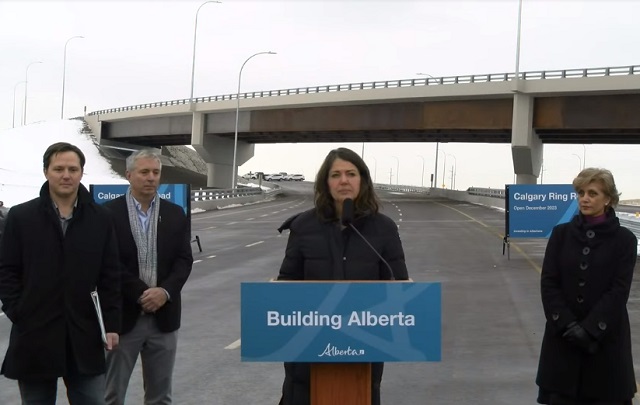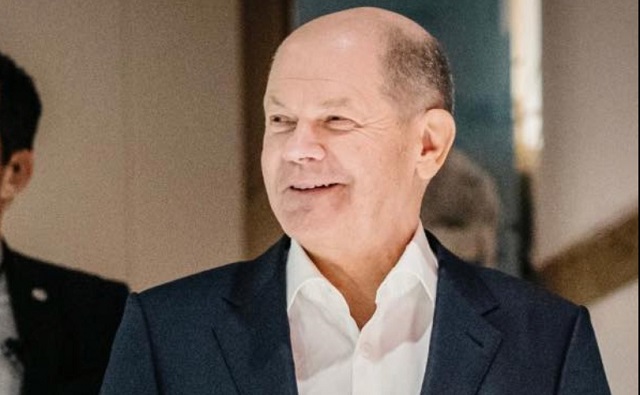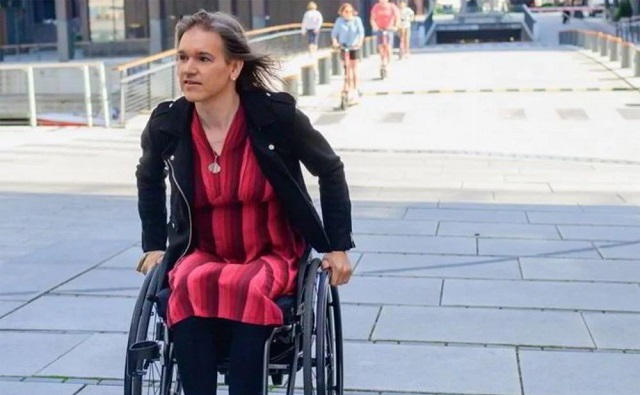Calgary
Project Warmth – Keeping the Community Warm During the Cold Calgary Winter

Calgarians have been blessed with an unprecedentedly mild winter this year, with temperatures consistently reaching the mid-to-high teens leading into the month of December.
However, while many of us are enjoying being able to spend time outdoors this late in the year without having to bundle up, the harsh reality remains that for many members of the community, winter is not only uncomfortable, but unsafe. For those without access to basic necessities such as reliable shelter and outdoor essentials like coats, boots and gloves to keep safe from the elements during the cold months, winter in Calgary can be very scary.
 A number of local organizations exist throughout the city dedicated to helping the less fortunate survive and thrive during the snowy season, and during the remainder of the year. Established in 1996, Project Warmth Society of Alberta has been providing essential outerwear to the underprivileged and homeless in Calgary and surrounding areas for close to 3 decades.
A number of local organizations exist throughout the city dedicated to helping the less fortunate survive and thrive during the snowy season, and during the remainder of the year. Established in 1996, Project Warmth Society of Alberta has been providing essential outerwear to the underprivileged and homeless in Calgary and surrounding areas for close to 3 decades.
The Project Warmth initiative calls on Calgarians to take a look through their homes and put their gently used winter items towards a good cause, “Many of us have these basic items. That old blanket, jacket, or clothing item that we don’t wear anymore can make a huge difference to those who need them.”
Project Warmth’s approach focuses on helping as many people as possible, whether it’s by connecting directly with individuals or helping other local organizations meet their needs. “We’re there for everybody,” says Gordon Hoffman, Founder and President of Project Warmth Society of Alberta, “Whether it’s coats, boots, scarves, gloves, caps … there is always someone in need of something we have.”
 Since 1996, Project Warmth has provided more than 1 million articles of warm clothing to individuals, schools, social service agencies, drop-in centres and shelters throughout the city. In partnership with the City of Calgary, Project Warmth accepts drop-off donations at any fire station.
Since 1996, Project Warmth has provided more than 1 million articles of warm clothing to individuals, schools, social service agencies, drop-in centres and shelters throughout the city. In partnership with the City of Calgary, Project Warmth accepts drop-off donations at any fire station.
In addition to accepting and redistributing donations, Project Warmth has also provided aid in the form of reimbursements for social organizations who have purchased warm clothing for their patrons.
According to Hoffman, the organization has faced obstacles over the course of the year as they have been forced to adapt to the precautions and restrictions of the COVID-19 pandemic. However, the support from the community has remained intact and they are busier than ever. “It’s been very encouraging, during these difficult times, where there is so much stress and agony for so many people,” says Hoffman, “to see that individuals are still very concerned about supporting others in their community.”
 There are a number of ways to get involved with Project Warmth Society of Alberta and contribute to building a better future for the underprivileged members of the Calgary community. In addition to donating new or gently used winter clothing, you can make a monetary donation to Project Warmth, or apply for available volunteer opportunities.
There are a number of ways to get involved with Project Warmth Society of Alberta and contribute to building a better future for the underprivileged members of the Calgary community. In addition to donating new or gently used winter clothing, you can make a monetary donation to Project Warmth, or apply for available volunteer opportunities.
Due to current pandemic restrictions, drop offs at local fire stations have been limited to drop-off bagged donations in the yellow bins located in the parking lots of 4 stations:
- South Calgary Fire Station 5
3129 14 Street S.W.
- Forest Heights Fire Station 12
123 44 Street S.E.
- Midnapore Fire Station 26
450 Midpark Way S.E.
- Royal Vista Fire Station 34
16 Royal Vista Way N.W.
For more information on Project Warmth Society of Alberta and how to get involved, visit https://www.projectwarmth.ca.
For more stories, visit Todayville Calgary.
Alberta
Building a 21st century transit system for Calgary

From the Frontier Centre for Public Policy
Calgary Transit is mired in the past, building an obsolete transit system designed for an archaic view of a city. Before the pandemic, transit carried 45 percent of downtown Calgary employees to work, but less than 10 percent of workers in the rest of the Calgary urban area, showing that Calgary Transit doesn’t really serve all of Calgary; it mainly serves downtown.
That would have worked in 1909, when Calgary’s first electric streetcars began operating and most jobs were downtown. By 2016, less than 15 percent of Calgary jobs were downtown, and the pandemic has reduced that number further.
Rather than design a transit system that serves the entire urban area, Calgary Transit light-rail system reinforced its downtown focus. Transit ridership has grown since the city’s first light-rail line opened in 1981, but it was growing faster before the light rail began operating than it has since then. Now Calgary Transit is planning even more downtown-oriented light-rail lines.
Light rail is an expensive form of low-capacity transit. The word “light” in light rail refers not to weight but to capacity: the American Public Transportation Association’s transit glossary defines light rail as “an electric railway with a ‘light volume’ traffic capacity.” While a light-rail train can hold a lot of people, for safety reasons a single light-rail line can move no more than about 20 trains per hour in each direction.
By comparison, Portland, Oregon runs 160 buses per hour down certain city streets. An Istanbul busway moves more than 250 buses per hour. Bogota Columbia busways move 350 buses per hour. All these transitways cost far less per mile than light rail yet can move more people per hour.
Once they leave a busway, buses can go on any city street, reaching far more destinations than rail. If a bus breaks down or a street is closed for some reason, other buses can find detours while a single light-rail breakdown can jam up an entire rail line. If transportation patterns change because of a pandemic, the opening of a new economic center, or the decline of an existing center, bus routes can change overnight while rail routes take years and cost hundreds of millions of dollars to change.
To truly serve the entire region, Calgary Transit must recognize that buses are faster, more flexible, and can move more people per hour to more destinations at a lower cost than any rail system. It should also recognize that modern urban areas have many economic centers and use buses to serve all those centers.
Besides downtown, Calgary’s major economic centers—the airport, the University of Calgary, Chinook Center, the Seton health center, and others—are mostly located near freeway on- and off-ramps. Calgary Transit should identify ten or so such centers geographically distributed around the region. It should locate transit centers—which need be no more than curbside parking reserved for buses with some modest bus shelters—near the freeway exchanges closest to each center.
It should then operate frequent (up to five times per hour) non-stop buses from every center to every other center. A few secondary transit centers might have non-stop buses operate to just two or three other centers. Local bus routes should radiate away from each center to serve every neighborhood of the Calgary urban area.
Since non-stop buses will operate at freeway speeds, the average speed of this bus system will be more than double the average speed of Calgary’s current bus-and-rail system. Transit riders will be able to get from any corner of the urban area to any other part of the urban area at speeds competitive with driving.
Such a polycentric system will serve a much higher percentage of the region’s workers and other travelers than the current monocentric system yet cost no more to operate. It will cost far less to build than a single rail line since most of the necessary infrastructure already exists. While some may worry that buses will get caught in congestion, the solution is to fix congestion for everyone, not spend billions on a slow rail system that only serves a few people in the region.
It is time for Calgary Transit to enter the 21st century. A polycentric bus system may be the best way to do it.
Randal O’Toole is a transportation policy analyst and author of Building 21st Century Transit Systems for Canadian Cities.
Alberta
Calgary Ring Road opens 10 months early

Christmas comes early for Calgary drivers
The Calgary Ring Road is now ready to be opened to public traffic, several months ahead of schedule.
Calgary’s ring road is one of the largest infrastructure undertakings in Calgary’s history and includes 197 new bridges and 48 interchanges. The 101-kilometre free-flowing Calgary Ring Road will open to traffic Dec. 19, completing a project decades in the making.
“Calgary’s ring road is a project that has been decades in the making and its completion is a real cause for celebration. This has been an important project and our government got it done. With this final section completed, travelling just got a little easier for families and for workers. This will not only benefit Calgarians and residents in the metro region, it will provide a boost to our economy, as goods can be transported more easily across our province.”
Although construction of the entire ring road project began in 1999 under former premier Ralph Klein, discussions on a ring road around the City of Calgary began as early as the 1950s. In the late 1970s, under former premier Peter Lougheed, high-level planning and land acquisition started and a transportation utility corridor was established to make the Calgary Ring Road a reality.
“The final section of the Calgary Ring Road is now complete, and I’d like to acknowledge the work done by former premiers and transportation ministers and their vision to build Alberta. I’m proud to announce that the final section was completed on budget and months ahead of schedule.”
“I’m thrilled to see the Calgary Ring Road project completed. It was something I have helped shepherd through the process since 2014. Finally, all the hard work put in by everyone has become a reality. The Calgary Ring Road will provide travellers with over 100 kilometres of free-flow travel, create new travel options for the City of Calgary and surrounding area and provide improved market access across the region.”
Opening the ring road means new travel options for Calgarians, which will draw traffic away from heavily travelled and congested roads such as the Deerfoot Trail, 16th Avenue, Glenmore Trail and Sarcee Trail. For commercial carriers, the ring road provides an efficient bypass route, saving time and money for the delivery and shipment of goods and services.
“The ring road investment generated thousands of local jobs and will now play an integral role in keeping Calgarians and the economy moving. This important transportation link will ease congestion on city routes and greatly improve connectivity and access for businesses transporting goods.”
The ring road is a critical component to growing economic corridors in Alberta and Western Canada, as it connects the Trans-Canada Highway to the east and west, and the Queen Elizabeth II Highway and Highway 2 to the north and south. It is also part of the CANAMEX corridor, which connects Alberta to the highway network in the United States and Mexico.
The completion of the ring road is a major boost for Calgary, opening new business opportunities and supporting key components of the Calgary economy. It sends a signal to businesses and investors that Calgary has a strong highway infrastructure, providing economic corridor connections through the entire region.
“With one of the smoothest commutes in Canada and the capacity to reach 16 million customers by road within a single day, Calgary offers unmatched quality of life and economic opportunities. The triumphant completion of the Calgary Ring Road further improves our capacity to attract even more companies, capital and talent to our city.”
“This is an exciting step forward for the Calgary Metropolitan Region. This key artery will not only improve the quality of life for the residents of the region, it is also a key economic enabler and we are thrilled to see its completion.”
Quick facts
- Stretched into a single lane, the highway is 1,304 kilometres long, the distance from Calgary to Winnipeg.
- Other sections opened in 2009, 2013, 2020 and 2023.
- The West Calgary Ring Road is the final piece of the ring road project.
-

 Jordan Peterson2 days ago
Jordan Peterson2 days agoJordan Peterson slams CBC for only interviewing pro-LGBT doctors about UK report on child ‘sex changes’
-

 Addictions2 days ago
Addictions2 days agoLiberal MP blasts Trudeau-backed ‘safe supply’ drug programs, linking them to ‘chaos’ in cities
-

 International1 day ago
International1 day agoTelegram founder tells Tucker Carlson that US intel agents tried to spy on user messages
-

 International13 hours ago
International13 hours agoGerman parliament passes law allowing minors to change their legal gender once a year
-

 Opinion15 hours ago
Opinion15 hours agoTransgender ideology has enabled people to ‘identify’ as amputees
-

 Business1 day ago
Business1 day agoNew capital gains hike won’t work as claimed but will harm the economy
-

 Business20 hours ago
Business20 hours agoCanada’s economy has stagnated despite Ottawa’s spin
-

 Agriculture2 days ago
Agriculture2 days agoBill C-282, now in the Senate, risks holding back other economic sectors and further burdening consumers







